Nucleosome conformation dictates the histone code
- PMID: 38319148
- PMCID: PMC10876215
- DOI: 10.7554/eLife.78866
Nucleosome conformation dictates the histone code
Abstract
Histone post-translational modifications (PTMs) play a critical role in chromatin regulation. It has been proposed that these PTMs form localized 'codes' that are read by specialized regions (reader domains) in chromatin-associated proteins (CAPs) to regulate downstream function. Substantial effort has been made to define [CAP: histone PTM] specificities, and thus decipher the histone code and guide epigenetic therapies. However, this has largely been done using the reductive approach of isolated reader domains and histone peptides, which cannot account for any higher-order factors. Here, we show that the [BPTF PHD finger and bromodomain: histone PTM] interaction is dependent on nucleosome context. The tandem reader selectively associates with nucleosomal H3K4me3 and H3K14ac or H3K18ac, a combinatorial engagement that despite being in cis is not predicted by peptides. This in vitro specificity of the BPTF tandem reader for PTM-defined nucleosomes is recapitulated in a cellular context. We propose that regulatable histone tail accessibility and its impact on the binding potential of reader domains necessitates we refine the 'histone code' concept and interrogate it at the nucleosome level.
Keywords: PHD finger; bromodomain; chromosomes; gene expression; histone PTM; histone code; human; molecular biophysics; nucleosome; structural biology.
© 2024, Marunde, Fuchs et al.
Conflict of interest statement
MM, JB, IP, AV, NH, EW, MM, RW, ZG, HT, LM, UO, SH, KN, EM, KK, MC, MC, ZS, BV Affiliated with EpiCypher Inc; the author has no financial interests to declare, HF, CM No competing interests declared, MK A board member of EpiCypher Inc; the author has no financial interests to declare
Figures
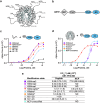

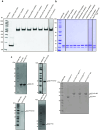

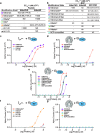



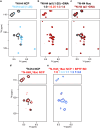
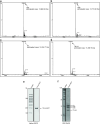






Update of
References
MeSH terms
Substances
Associated data
- Actions
Grants and funding
- P30CA086862/NH/NIH HHS/United States
- R44 GM116584/GM/NIGMS NIH HHS/United States
- R44 GM117683/GM/NIGMS NIH HHS/United States
- R43 CA236474/CA/NCI NIH HHS/United States
- R35 GM128705/GM/NIGMS NIH HHS/United States
- 2T32GM008365-26A1/NH/NIH HHS/United States
- R44GM116584/NH/NIH HHS/United States
- R44 HG010595/HG/NHGRI NIH HHS/United States
- R44 CA214076/CA/NCI NIH HHS/United States
- R44 DE029633/DE/NIDCR NIH HHS/United States
- R43CA236474/NH/NIH HHS/United States
- R35GM128705/NH/NIH HHS/United States
- P30 CA086862/CA/NCI NIH HHS/United States
- T32 GM008365/GM/NIGMS NIH HHS/United States
- R44GM117683/NH/NIH HHS/United States
- R44CA214076/NH/NIH HHS/United States
- R44DE029633/NH/NIH HHS/United States
- S10 OD025020/OD/NIH HHS/United States
LinkOut - more resources
Full Text Sources
Molecular Biology Databases
Miscellaneous

